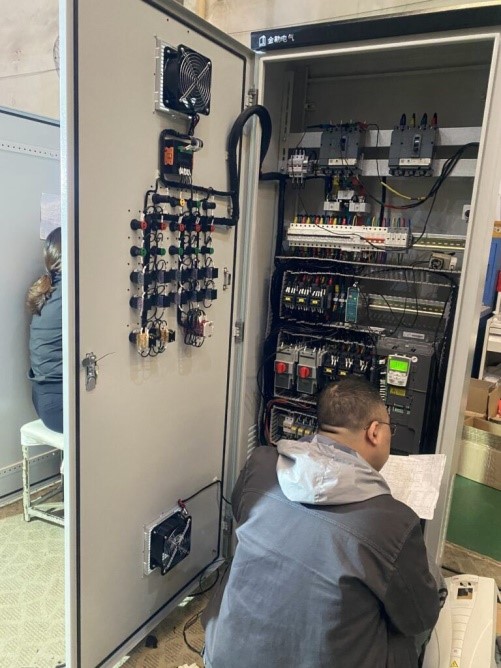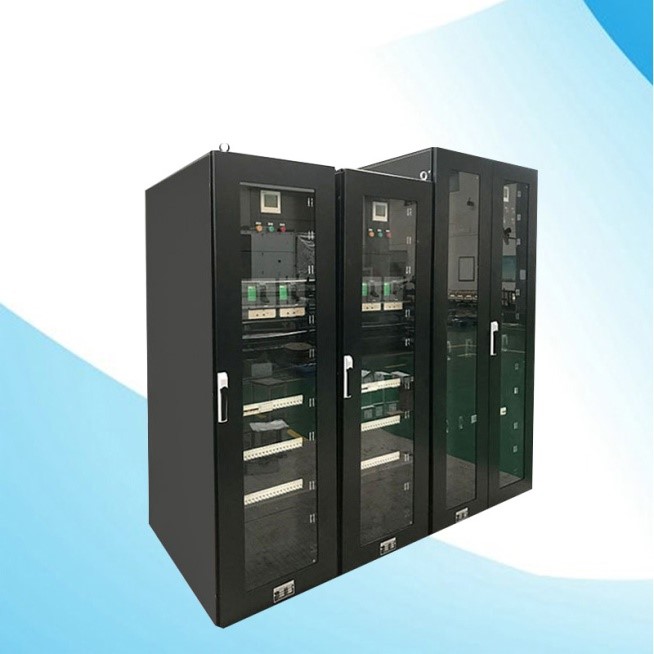Low voltage distribution cabinets are crucial components of the electrical infrastructure, but issues with quality can seriously affect their performance and dependability. Consumer complaints of early component failure, excessive heat buildup, poor assembly quality, and inadequate protection systems are common. These issues could jeopardize safety in addition to impairing the cabinets’ functionality. Strengthening the dependability and security of electrical systems requires addressing these problems.

Common Quality Issues
Although low voltage distribution cabinets are essential parts of the electrical infrastructure, their dependability and performance can be severely impacted by quality problems.
Overheating
Overheating is among the most prevalent issues. Excessive heat buildup can be caused by poor materials, poor construction, and inadequate ventilation. Shorter component lifespans, early component failure, and increased fire risks could arise from this. It’s critical to have effective thermal management, which includes heat-resistant components and cooling systems.
Loose Wiring
One of the main reasons for electrical problems and fires is loose wiring. Usually, poor installation, vibration, or damaged couplings are to blame. To avoid this problem, routine inspections and connection tightening are crucial. Additionally, using cable clamps and vibration-resistant connectors might assist lessen the issue.
Insufficient Protection Rating
The inside components of the cabinet may be exposed to dust, moisture, and other environmental elements due to inadequate protective ratings. Corrosion, insulation failure, and decreased performance may result from this. Cabinets must be selected with the appropriate ingress protection (IP) ratings in order to lessen these risks. Regular cleaning and maintenance can also extend the cabinet’s lifespan.
Frequent Breaker Failures
Frequent breaker failures can be attributed to poor component quality, overcurrent conditions, or improper usage. Using high-quality breakers with appropriate ratings and adhering to proper operating procedures can help prevent these issues. Regular inspection and maintenance of breakers are also crucial.
Voltage Instability
Variations in voltage can have a detrimental effect on how well connected equipment functions. This issue may get worse if the cabinet has poor voltage regulation. Using high-quality voltage regulators and stabilizers can help mitigate voltage instability.
Poor Component Quality
Low-quality parts may require more frequent repairs, break down more quickly, and cost more to replace. It is essential to buy premium parts from reputable suppliers to ensure the cabinet will function and last for a long time.
Poor Structural Design
Weak structural design might leave a cabinet vulnerable to damage during operation, installation, or transportation. Increased maintenance expenses and operating difficulties may result from this. To endure daily use, a sturdy and well-engineered cabinet design is essential.
Improper Installation
The functionality and safety of the cabinet may be jeopardized by improper installation. It could result in problems like improper grounding, weak connections, and misalignment. To avoid these issues, installers must receive the necessary training and follow proper installation protocols.
Signal Interference
Electromagnetic interference (EMI) from the cabinet may affect the way nearby electrical equipment operate. Effective shielding and grounding techniques can lessen signal interference.

Maintenance Challenges
Big cabinets may be more expensive and need more downtime to maintain because they are harder to reach. Easy access to components in a well-designed cabinet can make maintenance and troubleshooting easier. To maintain the cabinet in optimal condition, preventative maintenance programs and routine inspection are necessary.
Through meticulous design, production, installation, and maintenance, these typical quality issues can be addressed, greatly improving low voltage distribution cabinets’ dependability and performance.
Reliable Solutions
To address the common quality issues and enhance the reliability of low voltage distribution cabinets, a multi-faceted approach is necessary.
Enhanced Design for Heat Dissipation
Effective thermal management is crucial. Implementing enhanced cooling mechanisms, like better airflow or forced air movement, can greatly decrease overheating. Furthermore, utilizing materials with high thermal conductivity in the construction of cabinet enclosures and internal components can improve the efficiency of heat dissipation.
Improved Installation Practices
In order to avoid problems like weak connections and misalignments, proper installation is essential. These issues can be lessened by putting strict installation procedures into place and giving installers thorough training. Standard compliance can also be ensured during the installation process by performing routine quality checks.
Higher Protection Ratings
Cabinets should have sufficient IP ratings to protect against environmental influences. Higher IP rated cabinets can shield internal components from moisture, dust, and other impurities, especially in hostile situations.
High-Quality Components
Long-term dependability depends on the use of premium parts from reliable suppliers. Breakers, switches, and other electrical parts fall under this category. Although better components may initially cost more, over time they can save a substantial amount of money since they require less upkeep and repair.
Stable Voltage Output
Voltage fluctuations can harm connected equipment. Implementing voltage regulation mechanisms, such as stabilizers or regulators, can help maintain a stable voltage output. This is particularly important for sensitive electronic devices.
Durable Materials
Internal components and cabinet enclosures need to be manufactured of durable materials to withstand the demands of regular operation. The cabinet will survive longer if materials resistant to heat, impact, and corrosion are given priority.
Efficient Structural Design
A well-designed cabinet should prioritize ease of maintenance and accessibility. Modular designs with standardized components can simplify repairs and replacements. Ample space within the cabinet for wiring and components is also essential for efficient operation.
Professional Installation
It is essential to hire professionals with the necessary training and experience to install cabinets. Electrical code compliance, maximum performance, and safety are all ensured by proper installation.
Minimize Electromagnetic Interference
Effective shielding techniques should be used to avoid interference with adjacent electronic devices. EMI can be considerably reduced by using shielded wires and proper grounding.

Ease of Maintenance
Designing cabinets with accessibility in mind is essential for efficient maintenance. Standardized components, detachable panels, and clear labeling can make repairs and troubleshooting easier. The lifespan of the cabinet can also be extended with the use of preventive measures and regular maintenance plans.
The quality and dependability of low voltage distribution cabinets can be greatly increased by manufacturers and installers by putting these solutions into practice, which will benefit end users as well as the entire electrical infrastructure.
Conclusion
Although low voltage distribution cabinets are essential to the functioning of the current electrical infrastructure, quality problems have a major effect on their performance. In order to guarantee dependable power supply, avoid expensive downtime, and improve overall system efficiency, these issues must be resolved. Through the industry’s prioritization of elements including enhanced design, rigorous quality control, appropriate installation, and routine maintenance, low voltage distribution cabinet performance can be raised. This all-encompassing strategy not only protects against possible risks but also raises client satisfaction and confidence in electrical systems. In the end, spending money on high-quality cabinets is an investment in the dependability and durability of the entire electrical system.
External links:
https://en.wikipedia.org/wiki/Electrical_enclosure
https:// www.statx.com/fire-education/types-industrial-electrical-cabinets/
https:// www.eabel.com/what-are-electrical-cabinets-used-for/





